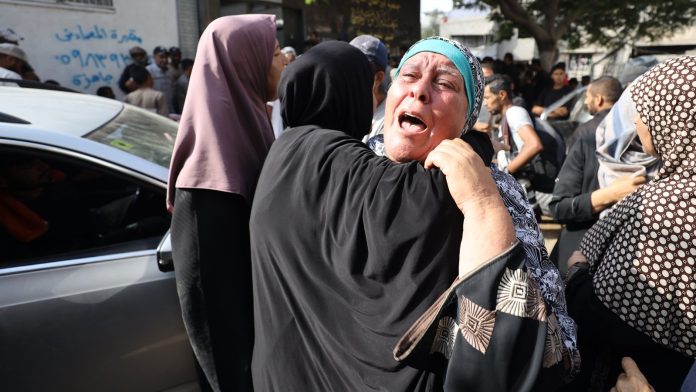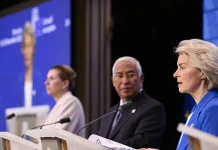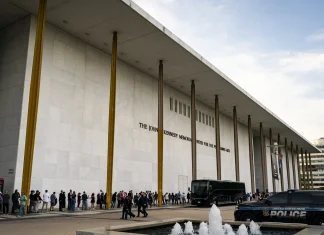
Amid the Ruins of Gaza: An Evacuation Touched by Hope and Despair
The sun rises over a landscape scarred by conflict—a terrain where homes once hummed with life now lie shattered, streets dusted in the ash of relentless war. Amidst this devastation, an urgent movement begins: Gaza’s beleaguered residents are being told to prepare for relocation from the northern battlegrounds to the south.
In the words of the Israeli military, this evacuation comes “to ensure their safety.” But what does safety mean for a people caught between bomb blasts, political strife, and a humanitarian nightmare?
Planning the Exodus: Shelter Amid the Storm
Starting this Sunday, tents and shelter equipment are set to arrive in southern Gaza, a fragile lifeline transferred through the Kerem Shalom crossing by the United Nations and international aid groups, following inspection by Israeli officials.
These provisions promise a temporary refuge for the displaced—families uprooted by an impending Israeli offensive targeting northern Gaza City, the largest urban center of the enclave and home to around 1 million residents. But with so much uncertainty, the promises of safety ring hollow to many.
“We are providing shelter, yes,” explained a military spokesperson off the record. “But the complexities of this conflict don’t allow us to guarantee anything beyond that.” This murky assurance hangs over a population already burdened with grief, starvation, and the ceaseless sound of drones overhead.
The Human Toll Behind the Headlines
The conflict ignited on October 7, 2023, when Hamas militants launched a surprise attack into southern Israel, killing 1,200 people and capturing 251 hostages. Since then, Israel’s retaliatory military campaign has devastated Gaza, according to the local health ministry, claiming over 61,000 Palestinian lives.
The enclave’s infrastructure lies in tatters: hospitals struggling under the weight of casualties, water supplies contaminated, and food deliveries hindered by blockade and bombardment. The United Nations warns of a “hunger crisis” and a displaced population with 70%–80% now internally displaced, squeezing the fabric of Gaza to its breaking point.
International voices express unease. A UN official, speaking under anonymity, shared, “Moving tens of thousands from a bombed-out northern sector to the south is an enormous logistical and ethical challenge. There isn’t a truly ‘safe zone’ here. Every inch of Gaza is touched by war.”
Voices From the Ground: Fear, Resilience, and Defiance
In Shejaia and Zeitoun, neighborhoods on Gaza City’s edge, residents describe a living nightmare. Amina, a mother of three, recounts the last weeks. “Our home was hit by tank fire. We had nowhere to hide. Now, they say we must leave again. But where can you run when the whole city is crumbling?” Her voice cracks—not with despair alone, but with a fierce will to survive.
Local doctor Samir reminisces about the increasing pressure hospitals face. “We see patients arriving with wounds from unexploded ordnance, injuries from collapsed buildings—we’re stretched beyond capacity. And now there’s word of more fighting coming. It’s heartbreaking.”
For many Palestinians, skepticism colors the evacuation plan. Ahmed Mansour, a community organizer in southern Gaza, muses, “Is relocation a path to safety or simply a strategy to occupy and control? We’ve lived under blockades, airstrikes, and promises that haven’t been kept.” His question lingers—challenging readers far beyond Gaza’s borders to reflect on the true meaning of “safe zones.”
International Repercussions: A Conflict Echoing Worldwide
Globally, the eyes of governments, humanitarian agencies, and civilians remain fixated on Gaza. The United States has been mediating ceasefire negotiations, supported by regional heavyweights Egypt and Qatar. Yet, talks fell into deadlock last month, leaving hostilities unchecked and the hostage crisis unresolved—with only 20 of the 50 hostages still alive in Gaza.
This stalemate fuels unrest across Israel itself. Sunday protests are planned nationwide, as citizens demand an end to the bloodshed and the safe return of hostages. Universities, municipal offices, and businesses are joining in solidarity strikes, underscoring the complex human emotions stirring on all sides.
Why Does This Matter to Us, Far Away?
As you read, thousands of miles from Gaza, you might wonder: why should this distant conflict stir our hearts and minds? Because the struggle unfolding here is not isolated. It reflects the brutal reality of modern warfare where civilian populations bear the brunt, where geopolitics can crush individual lives. It forces us to ask uncomfortable questions about the nature of safety, the cost of vengeance, and how the global community should respond to protect those trapped in crises.
With the world rushing to label narratives and political allegiances, we risk losing the human story—the mothers like Amina, the doctors like Samir, the organizers like Ahmed, all yearning for survival above politics. Their stories demand empathy beyond headlines. They challenge us to envision peace in a land where the echoes of bombs seem deafening.
Looking Forward: The Fragile Hope for Gaza’s Future
The evacuation and provision of shelter in southern Gaza might offer a sliver of temporary relief. Yet, real safety—safe from bombs, starvation, and displacement—remains elusive. As the Israeli military intensifies its search-and-destroy missions around Gaza City with increased aerial and tank assaults, the population braces for what may come next.
Dr. Hana Khalil, a human rights advocate based in Ramallah, voices a somber hope: “No matter how difficult, our priority must be humanity. International actors must push harder for sustained ceasefire and comprehensive aid access. Without this, the cycle of destruction and despair will continue endlessly.”
We stand at a crossroads, watching lives upended and history written in fire and rubble. Will global attention translate into concrete action? Will the people of Gaza find refuge not just in tents, but in peace? As observers, citizens, and fellow humans—how will we answer their call?
So, dear reader, what do you see when you look at stories like these? Conflict? Injustice? Resilience? Or perhaps a call to rethink how humanity protects its most vulnerable? Gaza’s skies may be thick with smoke, but beneath the dust lies a shared quest for dignity and safety. It’s a journey worth understanding—and sharing.









